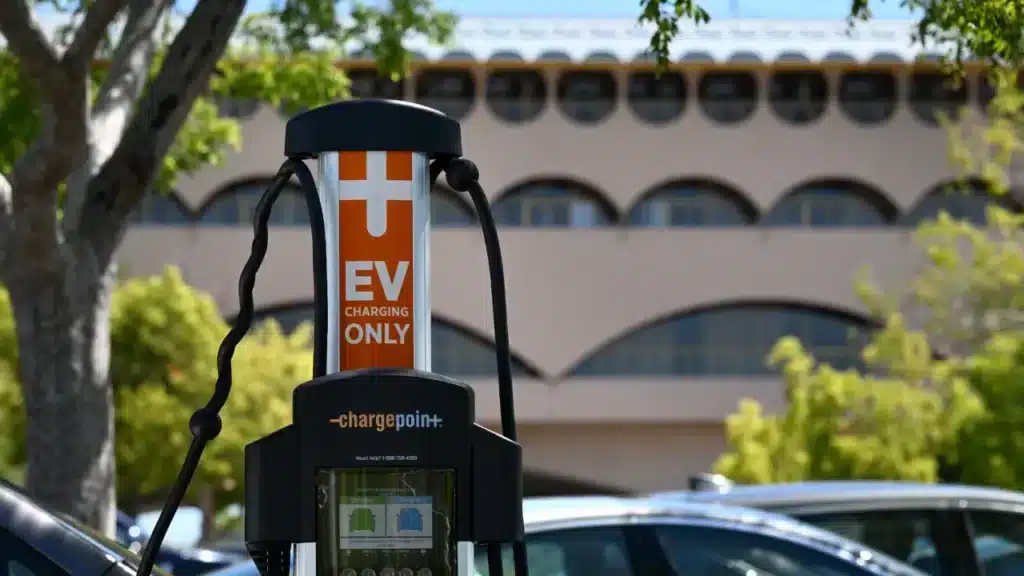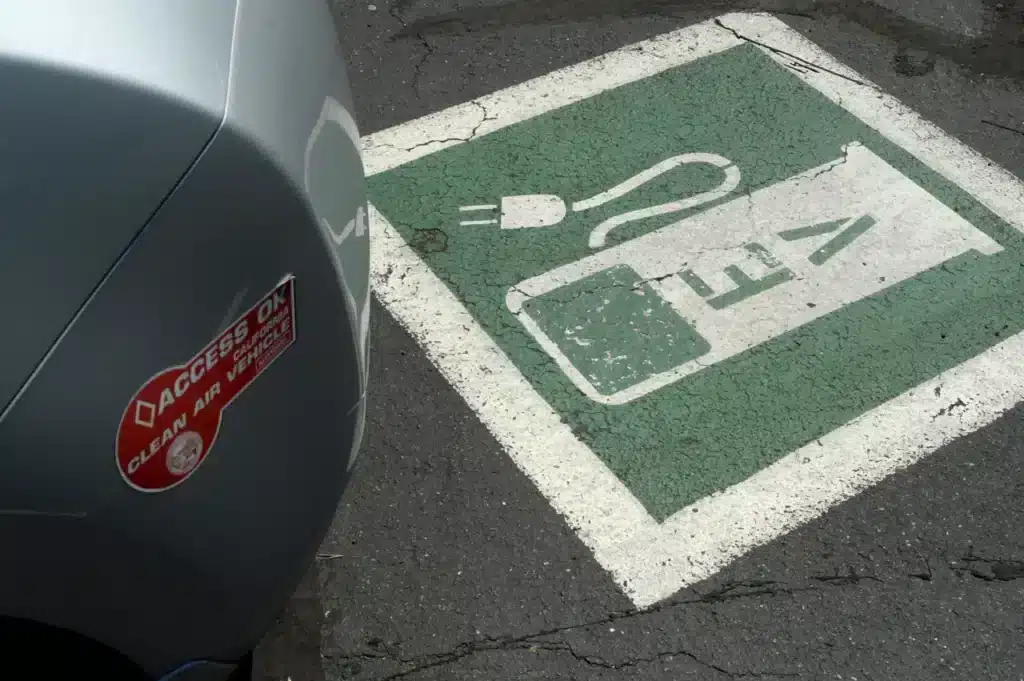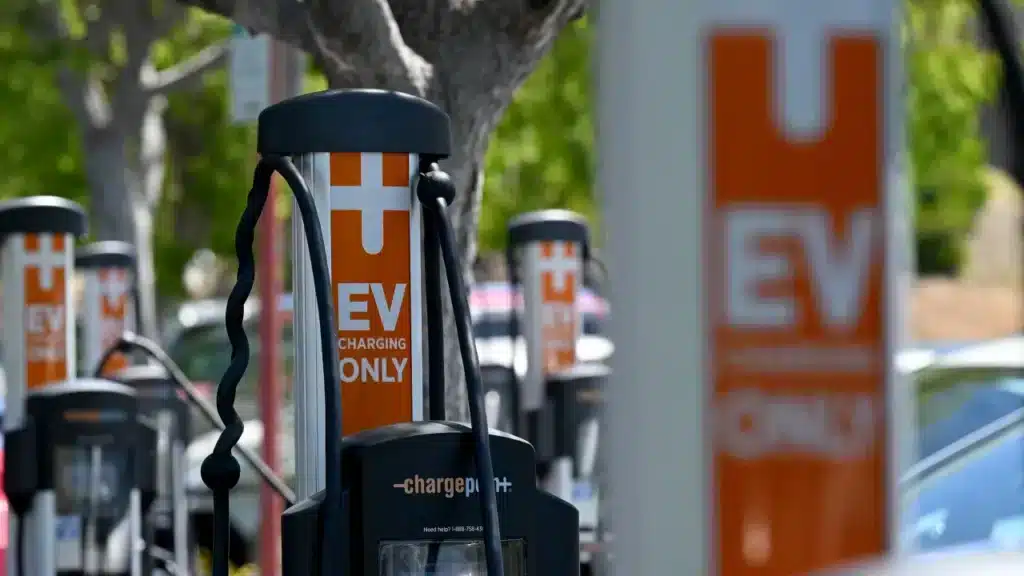Marin seeks grant for electric vehicle chargers in underserved areas
May 16, 2023
by Will Houston| Marin Ij

Marin County is eyeing millions of dollars in new federal funding to build electric vehicle charging stations in low-income and underserved areas.
The Marin County Board of Supervisors voted unanimously on Tuesday to apply for grant money to begin a one-year study of potential locations for publicly accessible charging stations. The study will work to identify willing property owners, project costs and the extent of work needed to construct them.
The county plans to fund the study and projects using money set aside for community electric vehicle charging projects in the $1.2 trillion Infrastructure Investment and Jobs Act.
Greenbrae resident Carleen Cullen, the Cool the Earth nonprofit leader who worked to organize the grant effort over the past several months, called the initiative “a historic, first-time-ever opportunity.”
“We keep talking about including our equity communities but not enough has been done,” Cullen said. “This is the first time we’ll be able to do something meaningful.”

The county has identified 50 potential charging sites in western Marin, San Rafael, Novato and Marin City. The study would assess the 20 most promising locations for accessibility, parking availability, power sources and costs.
Marin County Planning Manager Dana Armanino said the locations would most likely be a mix of public and private properties that would be willing to have the stations.
“Basically, our hope with this is to get to documents and information that the federal government would consider shovel-ready so we could apply for subsequent grants from federal, state or local sources to construct projects in a later phase,” Armanino said.
Marin is eligible to receive up to $15 million for the projects through the $2.5 billion community grants program in the Infrastructure Investment and Jobs Act.
With each of the four areas having unique needs and challenges, the county will rely on comments from a variety of agencies and community organizations. They agencies include Canal Alliance, West Marin Climate Action, North Marin Community Services, the Marin Community Foundation, the Transportation Authority of Marin and MCE, the electric company formerly known as Marin Clean Energy.
Omar Carrera, chief executive officer of Canal Alliance, said that as the state and nation transition toward electric vehicles, low-income areas such as the largely Latino-populated Canal neighborhood in San Rafael would be left behind without aid.
While finding locations for charging stations is an important step, he said, it will not be enough to solve the problems that low-income communities face in this transition.
“Especially in neighborhoods in the Canal where you have multifamily buildings, buildings built in the ’60s that don’t have enough parking for people to live here, that will require major electrification improvements,” Carrera said. “When you start thinking about EV charging stations only, it doesn’t make sense.”
Carrera compared the federal investment in electric vehicle infrastructure to the construction of the interstate highway system in the 1950s. Carrera said the highway system resulted in redlining and relocation of lower-income, minority communities and neighborhoods.
“Electrification has that potential unless we engage the residents to be front and center of this conversation,” he said.
Major public investment in the neighborhood could lead to greater private investment in the neighborhood that displaces community members with middle-class and higher-income residents, he said.
Additionally, he said that residents will need other modes of transportation, including improved transit, and not a one-for-one replacement of gas-powered cars for electric cars.
“We need to make sure that the residents of low-income communities are not just informed about EV cars,” Carrera said. “We need to make sure we have financing programs, that we have workforce development, we need to make sure that we have solutions and most importantly they need to lead that work.”
In western Marin, only a handful of charging stations are available. While the population is much lower and widely distributed compared to bayside communities in Marin, the coastal area is a popular destination visited by millions of people each year.
Marin is eligible to receive up to $15 million for the projects through the $2.5 billion community grants program in the Infrastructure Investment and Jobs Act.
With each of the four areas having unique needs and challenges, the county will rely on comments from a variety of agencies and community organizations. They agencies include Canal Alliance, West Marin Climate Action, North Marin Community Services, the Marin Community Foundation, the Transportation Authority of Marin and MCE, the electric company formerly known as Marin Clean Energy.
Omar Carrera, chief executive officer of Canal Alliance, said that as the state and nation transition toward electric vehicles, low-income areas such as the largely Latino-populated Canal neighborhood in San Rafael would be left behind without aid.
While finding locations for charging stations is an important step, he said, it will not be enough to solve the problems that low-income communities face in this transition.
“Especially in neighborhoods in the Canal where you have multifamily buildings, buildings built in the ’60s that don’t have enough parking for people to live here, that will require major electrification improvements,” Carrera said. “When you start thinking about EV charging stations only, it doesn’t make sense.”
Carrera compared the federal investment in electric vehicle infrastructure to the construction of the interstate highway system in the 1950s. Carrera said the highway system resulted in redlining and relocation of lower-income, minority communities and neighborhoods.
“Electrification has that potential unless we engage the residents to be front and center of this conversation,” he said.
Major public investment in the neighborhood could lead to greater private investment in the neighborhood that displaces community members with middle-class and higher-income residents, he said.
Additionally, he said that residents will need other modes of transportation, including improved transit, and not a one-for-one replacement of gas-powered cars for electric cars.
“We need to make sure that the residents of low-income communities are not just informed about EV cars,” Carrera said. “We need to make sure we have financing programs, that we have workforce development, we need to make sure that we have solutions and most importantly they need to lead that work.”
In western Marin, only a handful of charging stations are available. While the population is much lower and widely distributed compared to bayside communities in Marin, the coastal area is a popular destination visited by millions of people each year.
Read the article on the MarinIJ.
